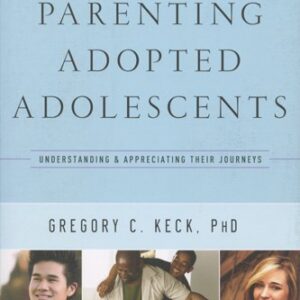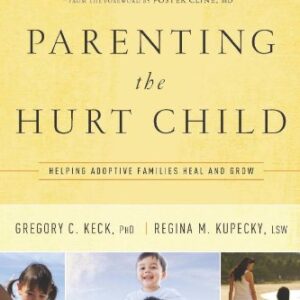Affirming the Hurt Adoptee’s Reality
The trauma of hurt children who go into adoptive homes is often so dramatic that the adults involved in the situation cannot deal with it. I believe that is why parents and social workers focus too much on what few “positives” there are about hurtful birth parents, and inadvertently minimize the truth for the child.
Time after time, I see nicely constructed lifebooks with nice pictures of people from the child’s early life. That’s fine – especially if one is trying to create good feelings. However, the stark reality is that if everyone at home was always smiling around the birthday cake or playing nicely in the park, the child would NOT have been removed from the family. In our attempts at being respectful to those who hurt their children, I believe we further confuse the children. We are not affirming their reality: we are almost conspiring with those parents who plead, “I just lost control…I was drinking when I burned her with the cigarette!”
Children most often know the truth – they lived it! We need to validate their truth, document their truth, and where possible, show them the truth. Sometimes in therapy, we have used police or hospital photos to show the child what exactly “bad touch”
means. These photos do more to affirm the child’s reality than the nice smiling photos taken at a supervised visit.
We have to remember that our perceptions often become our truths. Some things that we think are “bad” that happened to a child, the abusive parents think of as “okay” or even “good”.
Trauma is subjective. Therefore, we must present the facts as they WERE and then it becomes the child’s “job” to reframe it, repackage it, and put it together in THEIR understandable form. We can only affirm who they are when we give them the truths, and allow them to integrate or discard them as they will.
In their efforts to protect the child emotionally, and perhaps themselves as well, parents and professionals too often try to “make nice.” But we cannot change reality. We shouldn’t, nor should we try to make bad things good and good things bad. The attempt causes great cognitive dissonance, further perplexing the child and clouding his/her reality.
Just imagine someone turning up her nose as you are eating your favorite flavor of ice cream. They may even say, “I hate that – it tastes terrible,” as you are thinking that it’s the very best ice cream you’ve eaten! It is not the adoptive parent’s job, the professional’s job to protect the child from his/her past. In fact, it is not possible to do this. It is, however, possible and necessary to protect the child from present and future dangers.
Once such danger is the distortion of the child’s reality. Full disclosure should apply to all aspects of the adoptive process. I don’t feel that I should keep any information about a child from that child. I also don’t think that we have to wait until they are old enough to understand what happened to them. I’ve lived for many years, and daily, I don’t think I’m old enough to understand WHY people do what they do to their children. Most things that parents do are done before the child can understand them. We talk to babies…we explain things about being SORRY long before the child has conscience or understands the concept. If we waited for the child to get ready for what the parent is doing or saying before we said or did it, no child would ever “get it.”
The fact is, hurt children have been exposed to things we don’t like. We need to help the child heal, and to heal, we need to be honest – even when we don’t like the truth. Affirmation requires the truth, and the truth is affirming. Like pieces of a puzzle, each piece of information begins to complete the very complicated picture. Even when the picture is ugly, one can see the WHOLE when there are not too many HOLES. In the not-so-distant past, adoption was “easy” and healthy babies were the norm. But advances in both birth control and the legalization of pregnancy termination has changed the face of adoption. Though healthy babies still exist, the average child awaiting adoption today is far from healthy. Serious trauma in the birth family and involuntary removal from the birth home are often the earmarks of a modern day adoption. And, perhaps most tragically, many adoptive parents are uninformed and ill-prepared for the trials that come when they adopt a hurt child.
Used by permission of Pinon Press. All rights reserved.







